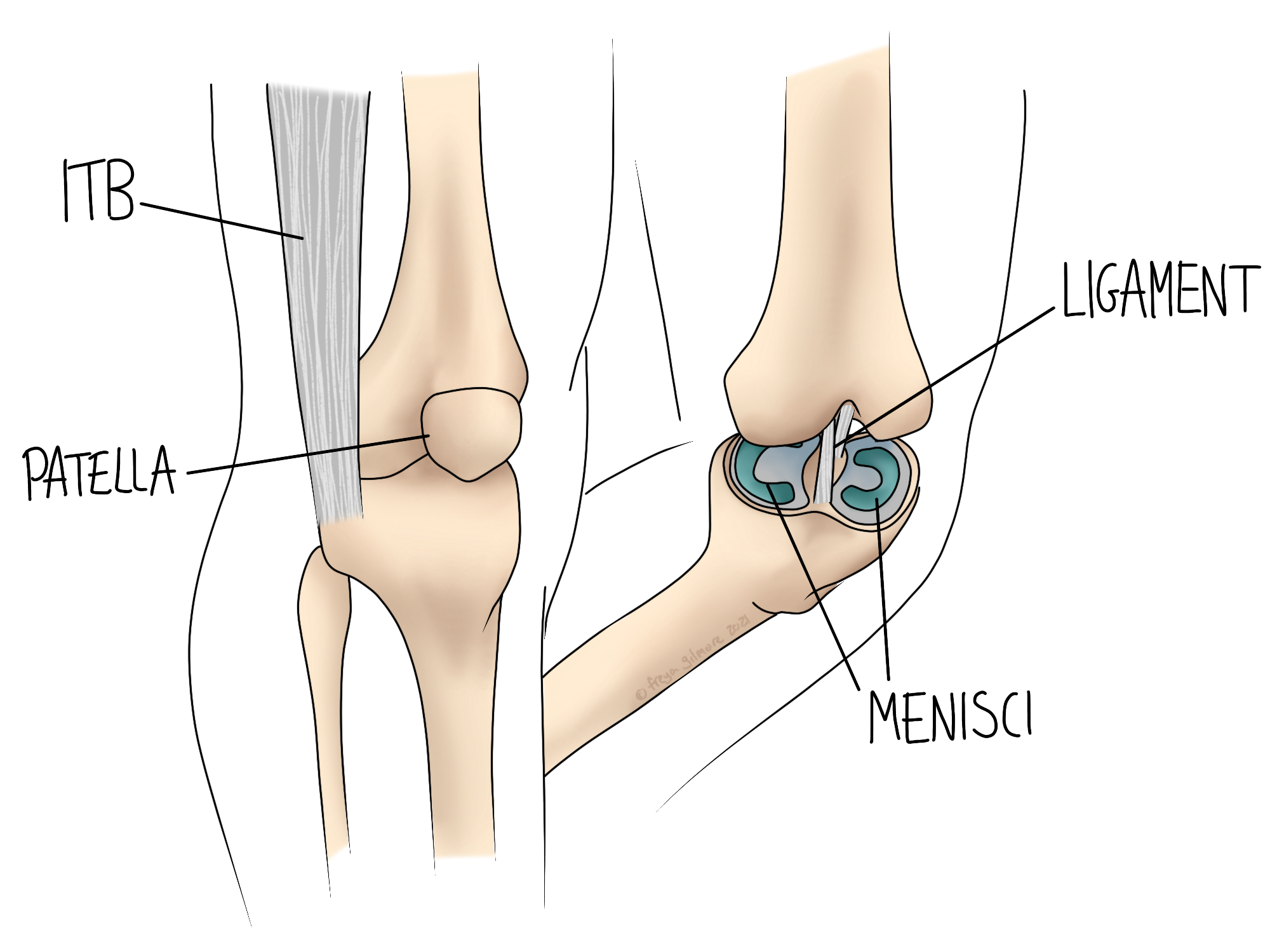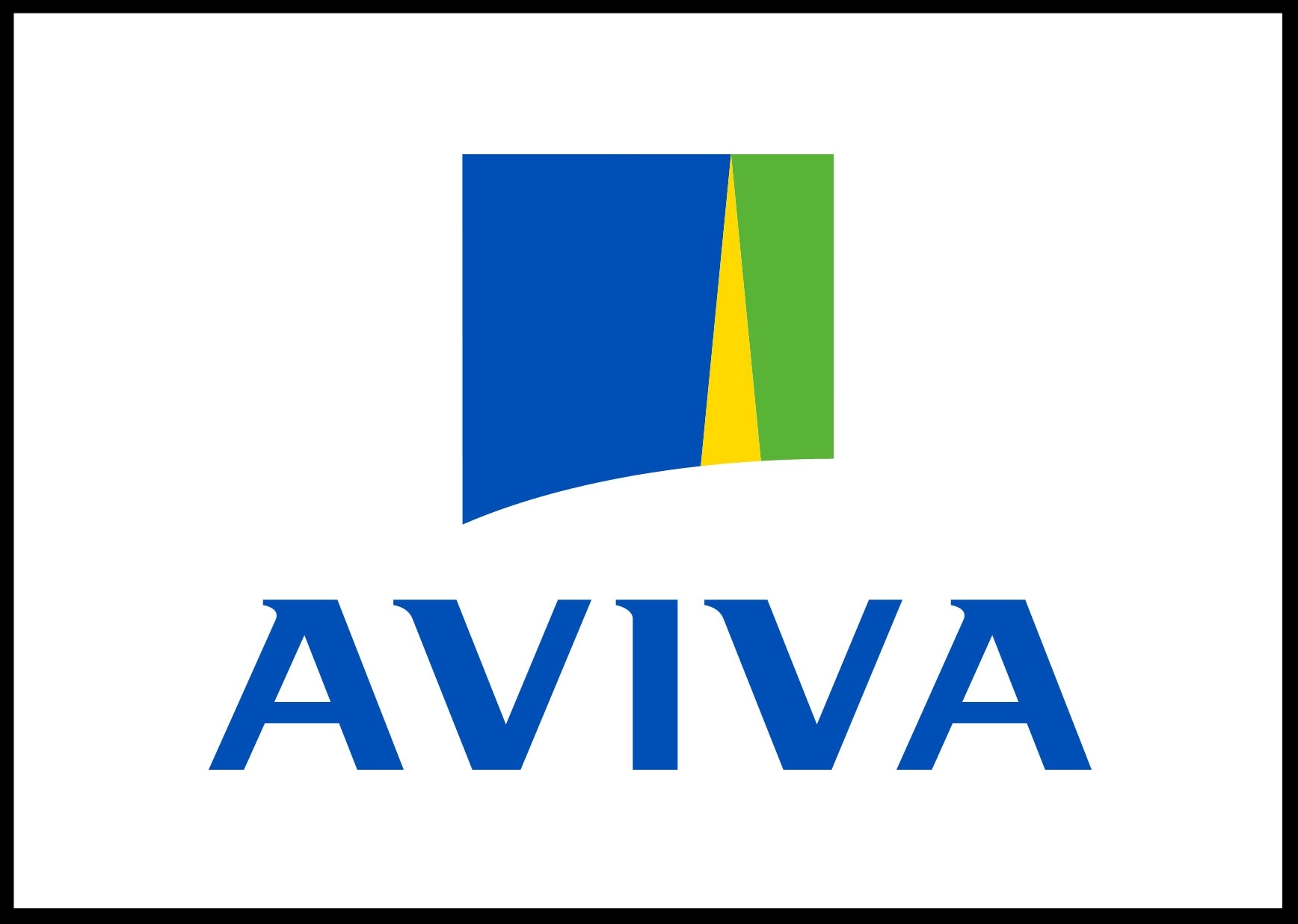Sport is great for the body as a whole, but it can sometimes be the cause of injuries. A handful of common soft tissue injuries are covered below: visit your osteopath to manage problems before they arise by identifying areas that are underworking or compensating. We can also help to rehabilitate your current injury- as long as it is minor and not a fracture or other emergency.
Meniscus Tears
The illustration above shows two C-shapes within the knee. These are two pieces of cartilage called the menisci. Their roles are to help stabilise the knee and absorb forces that travel through it. They can be damaged by forceful rotation, as often seen in footballers who plant a foot then twist through that leg.
Symptoms can come and go, especially if the tear goes along the cartilage rather than through it (a bucket handle” tear). This kind of tear can allow the loosened piece to easily displace and return to position. As a result, aggravating movements may not always bother the knee, and pain and swelling may be dependent on the current positioning of the cartilage flap.
Some meniscus tears need to be repaired with surgery, but more minor injuries can benefit from osteopathy to improve local joint health and mobility. Both of these benefits are key to providing the cartilage with the nutrients it needs to heal.
Labrum Injuries
Another piece of cartilage that supports the joint is the labrum. This is a lip of cartilage that sits at the edge of the socket in some ball and socket joints, such as the hip and shoulder. It helps to reduce excessive joint movement, thus stabilising the area. However traumatic injuries can cause a tear. Falls are a common cause, but repetitive throwing can also cause a shoulder labrum tear.
As these too are cartilage injuries, they are best managed by improving the general health within the joint. Movement encourages new joint fluid in, and helps to pump that fluid into the cartilage itself. Improving movement on your own can be difficult as the pain is limiting, but your osteopath can gently improve your range during treatment and provide you with exercises to continue the progress.
Sprains
Sprains are ligament injuries not to be confused with strains, which involve muscle. Ankle sprains are common sports injuries, but other areas can be affected too. Shoulder and elbow sprains are more common among athletes in throwing sports.
Major sprains can make a joint unstable and prone to further injury. Early rehabilitation can help, but ligaments are generally slow to heal and may not reach their original tension. Sometimes a more effective management strategy is to strengthen the surrounding area. Strong muscles supporting the affected ligaments can help to prevent excessive movement and ease the relative demand on the muscles themselves. We can help to develop this plan and adapt it as your joint stability improves.






